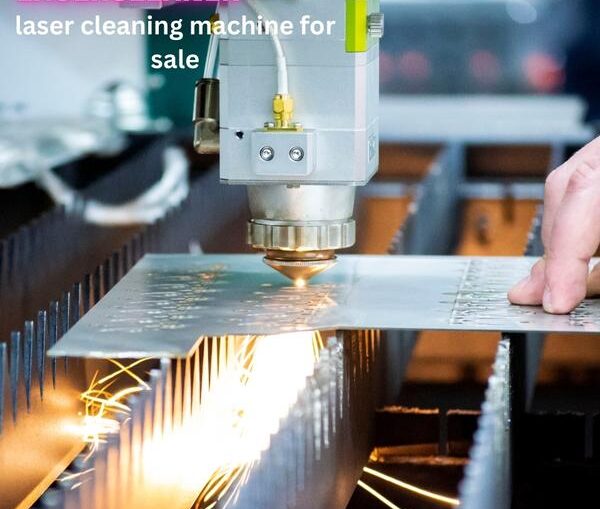If you’re searching for a laser cleaning machine for sale, you’re likely aiming to elevate your cleaning standards—whether in industrial restoration, automotive, or heritage preservation. As industries transition to non-contact, eco-friendly solutions, laser cleaners are fast becoming the gold standard for removing rust, paint, grease, and other contaminants. Let’s dive deep into how laser cleaning works, who needs it, and what to look for before making a purchase.
What Is a Laser Cleaning Machine?
A laser cleaning machine uses high-energy laser pulses to remove unwanted layers from metal, stone, plastics, and other materials. Unlike traditional cleaning methods (abrasive blasting, chemical washes), laser cleaning is:
-
Non-destructive
-
Environmentally friendly
-
Cost-effective over time
-
Highly precise
These systems rely on the principle of laser ablation, where a focused beam vaporizes contaminants without harming the underlying material.
Top Applications of Laser Cleaning Technology
Laser cleaning machines are widely used across multiple industries. Below are some of the most common applications:
| Industry | Laser Cleaning Use Case |
|---|---|
| Automotive | Rust removal, paint stripping, weld prep |
| Aerospace | Coating removal, surface preparation |
| Manufacturing | Mold cleaning, grease/oil residue elimination |
| Heritage Restoration | Stone/brick cleaning, artifact preservation |
| Electronics | Precise cleaning of small, sensitive components |
| Shipbuilding | Corrosion control, marine growth elimination |
Key Advantages of Using a Laser Cleaning Machine
Here are the top reasons professionals are making the switch:
-
No consumables – No need for sand, water, or chemicals.
-
Minimal waste – Targeted vaporization reduces post-cleaning cleanup.
-
Precision – Adjustable power settings allow custom cleaning depth.
-
Portability – Many models come in handheld, mobile formats.
-
Reduced labor – Automation options cut down manual effort.
How to Choose the Right Laser Cleaning Machine for Sale
When evaluating a laser cleaning machine for sale, consider these factors:
1. Power Output
-
Common models range from 50W to 2000W.
-
Higher power = faster cleaning, deeper penetration.
2. Pulse Type
-
Pulsed lasers are great for delicate tasks (e.g., art restoration).
-
Continuous wave lasers are better for industrial rust and paint removal.
3. Portability
-
Backpack or trolley-mounted machines suit fieldwork and on-site cleaning.
-
Stationary systems are ideal for workshops or factories.
4. Cooling Method
-
Air-cooled machines are lighter, while water-cooled systems support higher power outputs for longer jobs.
5. Control Interface
-
Look for touchscreen operation, adjustable frequency, and multiple safety features.
Frequently Asked Questions (FAQs)
What materials can be cleaned with a laser cleaner?
Metals (aluminum, steel, copper), stone, bricks, plastics, and coated surfaces can be effectively cleaned without damaging the substrate.
Is laser cleaning safe for heritage restoration?
Yes. With adjustable power levels, it’s one of the safest ways to clean historical artifacts and monuments without abrasive wear.
Do laser cleaning machines require special training?
Basic training is often required for proper operation and safety, but modern interfaces make them user-friendly.
How long does a laser cleaning machine last?
Industrial-grade machines typically offer 30,000 to 100,000 hours of laser lifespan, depending on maintenance and usage.
Is it worth buying a laser cleaning machine or renting one?
If you’re frequently engaged in high-volume or precision cleaning, buying offers a better ROI. Occasional users may prefer rental options.
Laser Cleaning Power Comparison Table
| Laser Power (W) | Best For | Cleaning Speed |
|---|---|---|
| 50W – 100W | Fine restoration, light coatings | Low to Medium |
| 200W – 500W | Rust removal, automotive maintenance | Medium to High |
| 1000W – 2000W | Industrial degreasing, heavy coatings | Very High |
Expert Tips for Buyers
-
Match machine specs with job type. Don’t overspend on high wattage if you only need fine cleaning.
-
Check warranty and support. Always opt for vendors offering after-sales training and technical service.
-
Evaluate build quality. Look for rugged materials, long-duty cycle support, and reliable optics.
-
Test before purchase. Request sample cleanings or demos if possible.
Why Laser Cleaning Is Gaining Momentum in 2025
With increasing emphasis on sustainability and efficiency, laser cleaning machines have become essential tools across sectors. Industries are actively replacing sandblasting and solvent-based methods to reduce environmental impact, streamline maintenance, and improve worker safety.
Professional operators report up to 80% time savings over traditional methods, reduced operational costs, and improved surface preparation for coatings or bonding. As prices continue to drop and technology evolves, the accessibility of these machines is increasing for small and medium businesses.
Final Thought
If you’re looking for a laser cleaning machine for sale, now is an excellent time to invest in a cleaner, faster, and smarter solution. These machines not only modernize your cleaning operations but also align with long-term sustainability goals—giving you an edge in any field where cleanliness, preservation, or efficiency matters.







